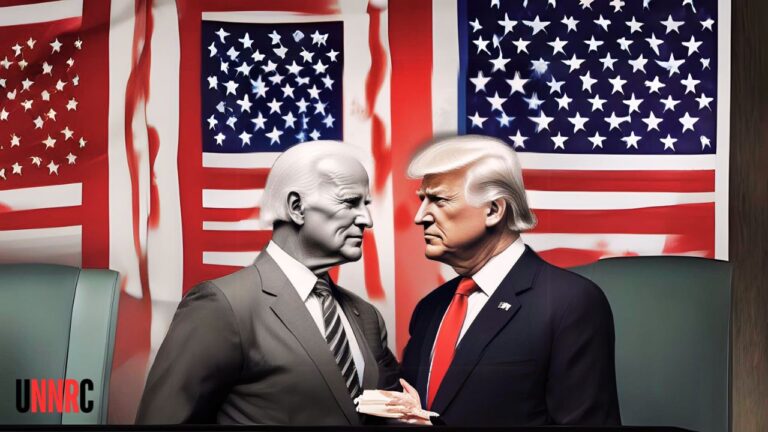Establishing the Context for the Biden versus Trump Era in America.
Central to the current political environment is a pronounced divergence between the administrations of Joe Biden and his predecessor, Donald Trump. Each leader embodies fundamentally different visions for the country, resulting in contrasting policies and leadership approaches that shape the narrative of the United States. Biden assumed office during a challenging period following Trump's divisive tenure, pledging to restore and revitalize the nation.
Economic Strategies: An Analysis of Biden's Policies in Relation to Trump's Legacy.
During Trump's administration, the economic landscape was marked by tax reductions, deregulation efforts, and a proactive trade policy designed to enhance domestic industries and improve stock market outcomes. In contrast, Biden's strategy has focused on raising taxes for the affluent, broadening social safety programs, and advocating for substantial infrastructure investments to invigorate the economy.
Managing the COVID-19 Pandemic: A Comparison of Approaches and Results.
The COVID-19 pandemic has emerged as a pivotal challenge for both administrations. President Trump encountered significant criticism for frequently minimizing the severity of the virus and delivering inconsistent messages, while President Biden focused on a comprehensive federal response, highlighting the importance of vaccine distribution and assistance for affected individuals. The management of the pandemic has had profound implications not only for public health but also for economic stability and international relations.
Climate Change Initiatives: Biden's Shift from Trump's Environmental Policies
Regarding climate policy, Trump rescinded a variety of environmental regulations and exited the Paris Climate Agreement. In contrast, Biden has made a significant pivot by rejoining the Paris Agreement and prioritizing climate change as a fundamental aspect of his administration's agenda, advancing initiatives focused on clean energy and conservation as part of a comprehensive dedication to environmental stewardship.
Comparative Analysis of Foreign Policy and International Relations: A Study of Two Distinct Administrations.
The foreign policy under Trump was characterized by an "America First" doctrine, which at times put a strain on established alliances. His erratic strategy included the implementation of tariffs and unilateral actions, notably the relocation of the U.S. Embassy in Israel to Jerusalem. In contrast, Biden has aimed to repair these relationships by reaffirming commitments to allies and emphasizing the importance of global cooperation, particularly through NATO and multilateral efforts.
Analyzing the Principles and Activities of Social Justice and Civil Rights.
The issues of social justice and civil rights have prominently featured in the societal challenges faced by America. The administration under Trump frequently encountered difficulties in its relations with various minority communities, while Biden has made efforts to confront systemic racism and inequality. He has championed reforms in policing and the criminal justice system, as well as reinstating protections for LGBTQ+ individuals and other marginalized populations.
Trump's stringent immigration policies resulted in rigorous enforcement measures at the border. In contrast, the Biden administration has been promoting a pathway to citizenship for undocumented immigrants and has ceased the construction of the border wall, reflecting a more humanitarian perspective on immigration issues, despite facing criticism regarding its implementation and management of border security.
The Transformation of Healthcare Policies: The Progression of Obamacare during the Administrations of Biden and Trump.
The healthcare sector has continued to be contentious, as Trump sought to dismantle and substitute the Affordable Care Act (ACA), commonly referred to as Obamacare. While these efforts did not succeed, they nonetheless undermined certain elements of the ACA. In contrast, Biden has aimed to fortify and expand the ACA, prioritizing increased access to healthcare and the reduction of costs.
Trump's administration made a notable impact by appointing three justices to the Supreme Court, thereby shifting its ideological stance to the right. On the other hand, Biden's judicial selections demonstrate a commitment to diversity and a blend of centrist and progressive values, which may affect the composition of federal courts for many years ahead.
Leadership Approaches and Public Discourse: A Comparison of Two Presidents.
A notable difference in leadership styles is apparent. Trump was recognized for his straightforward and frequently combative communication approach, making extensive use of social media platforms, particularly Twitter. In contrast, Biden has embraced a more conventional and unifying tone, striving to bring the nation together—an approach that has its own consequences for public interaction and political dialogue.
Public sentiment has become significantly divided. Trump retained strong backing from his supporters despite facing contentious policies and impeachment proceedings. Conversely, Biden began his tenure with elevated approval ratings driven by hopes for transformation, which have since varied in response to obstacles such as economic recovery and immigration issues.
Conclusion: Considering the Future Direction of America in the Period Following Trump and Prior to the New Beginning.
The influence of these contrasting administrations permeates the core of American politics and society. Biden's presidency continues to develop amid the enduring impact of Trump's significant presence. As the country confronts the ramifications and possibilities presented by these divergent policies and ideologies, the future path of America remains uncertain, underscoring the importance of the ongoing discourse regarding its prospective direction.


